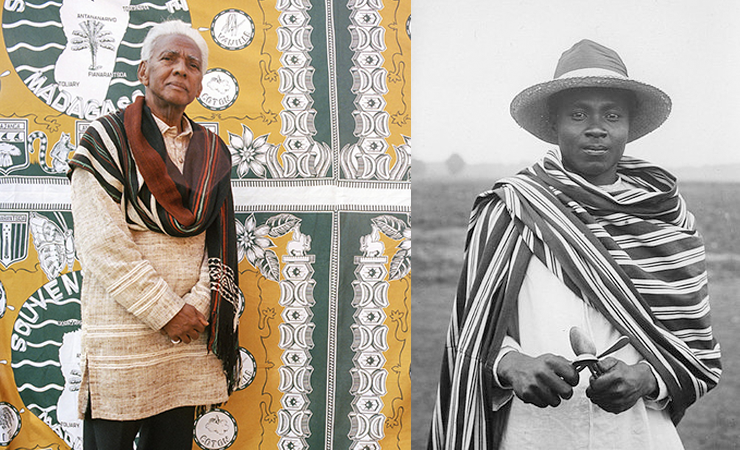
Madagascar, an island nation located off the southeastern coast of Africa, is known for its rich cultural heritage, which is reflected in its traditional clothing. The clothing styles in Madagascar vary across the island’s numerous ethnic groups, each with its unique customs and attire. Whether worn for everyday life or special occasions, these garments represent both the local culture and history. This guide will explore the traditional clothing of Madagascar for both men and women, highlighting key garments that define their heritage.
Traditional Madagascar Men’s Clothing
Lamba
Lamba is a versatile and iconic piece of clothing for Malagasy men. This rectangular piece of cloth is worn draped over the shoulders or around the waist. It is typically made from cotton or silk and can be plain or decorated with intricate patterns. The lamba serves as both everyday wear and ceremonial attire, with different colors or patterns used to distinguish between casual and formal occasions. It is an important garment that reflects the wearer’s social status and regional identity.
Sarong (Fotsy)
Another popular garment worn by Malagasy men is the fotsy, often referred to as a sarong. This cloth is typically worn as a wraparound skirt, and its simplicity is contrasted by its striking and sometimes vibrant patterns. It is common for men to wear this piece of clothing during the hot seasons or during ceremonial events, paired with a simple shirt or no shirt at all. The fotsy is particularly common in coastal regions and is ideal for the warm, humid climate.
Akanjo
The akanjo is a traditional Malagasy shirt that is typically worn for more formal occasions. Made from cotton, silk, or linen, the shirt is often embroidered with colorful designs along the collar and cuffs. It can be worn with either the lamba or fotsy for a complete outfit. The akanjo is seen as a symbol of respect, and it is commonly worn at weddings, religious ceremonies, or celebrations. The garments’ designs vary depending on the ethnic group and the occasion, and they often include local symbols and colors.
Satroka Hat
Hats, particularly the “satroka,” are another integral part of traditional Malagasy attire. The satroka is often made from woven fibers and comes in different styles depending on the region. It is worn by men as both a functional accessory to protect from the sun and as a decorative item. Headwear also plays a role in cultural rituals and ceremonies, where the design and material of the satroka can signify a person’s social position or profession.
Traditional Madagascar Women’s Clothing
Lamba
Just like men, women in Madagascar often wear the lamba, though for women, it is styled differently. The lamba for women is generally a larger, more elaborate cloth that can be wrapped around the body in various ways. It may be tied at the waist or draped over one shoulder, and is often adorned with bold colors and patterns, reflecting the wearer’s region and ethnic group. For formal events, the lamba is often made from fine fabrics like silk or velvet, with intricate embroidery or beadwork.
Kanga
The kanga is a traditional dress worn by Malagasy women, especially in rural areas. It consists of a large piece of cloth that is wrapped around the body and tied at the waist. The kanga is often brightly colored and features geometric designs or images of animals and nature. The garment can be worn in a variety of ways, whether as a simple wraparound or styled more elaborately for weddings or celebrations. This piece of clothing is an important aspect of Malagasy culture, symbolizing both femininity and tradition.
Lambahoany
Lambahoany is a pareo for a daily wear. Masonjoany, a magnificent face painting obtained from Santal wood, is also applied on the face to fit the dress, as well as to protect the skin from the sun. Lambahoany is a simple traditional outfit adapted to the region’s climate.
Salovana
Salovana is another type of pareo which they tie around the chest or around the waist. Salovana can be adapted to any circumstance, whether a work in the field, housework, or special occasions such as Tsaboraha (ritual ceremony in honor of the ancestors).
Modern Clothing in Madagascar
While traditional garments still hold cultural significance in Madagascar, modern clothing has become more common, especially in urban areas. Men and women increasingly wear Western-style clothes like jeans, t-shirts, and dresses in everyday life. However, traditional clothing is still worn for special occasions such as weddings, religious ceremonies, and national holidays, preserving the cultural heritage of the island. The fusion of traditional and modern styles is a defining feature of contemporary fashion in Madagascar, reflecting the country’s adaptability and respect for both its roots and its connection to global trends.
The post Complete Guide to Madagascar Clothing appeared first on The Fashiongton Post.
